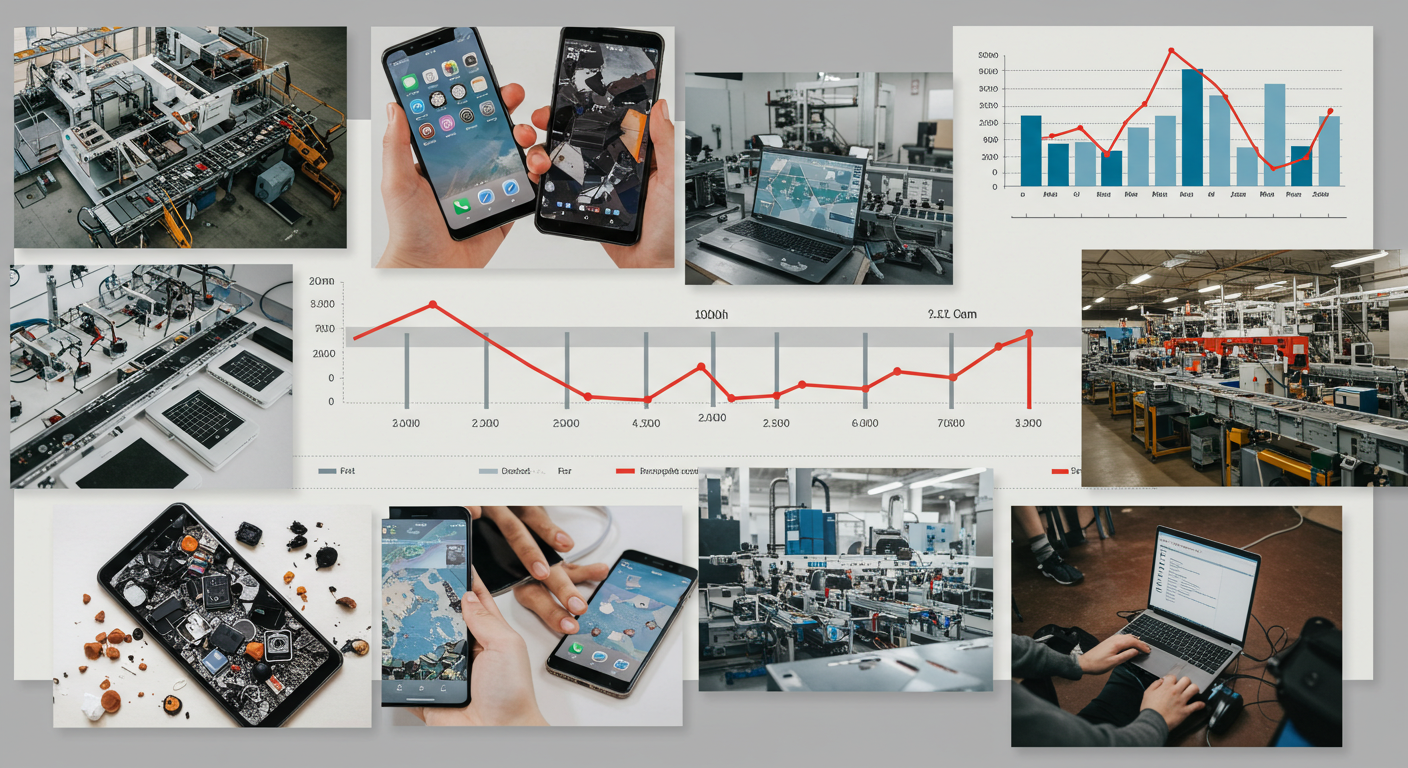The Cheapening of Electronics Products and one of the most fascinating shifts we’re witnessing is the ongoing cheapening of electronics products. From smartphones to home appliances, advancements in manufacturing technologies, supply chain efficiencies, and marketplace competition have made high-tech gadgets more affordable than ever before. But what’s driving these downwards trends in pricing, and what do they mean for businesses and consumers in 2024?
This guide explores the key trends that are influencing the declining costs of electronics products, the implications for various stakeholder groups, and how to adapt intelligently in a constantly evolving playing field.
What’s Behind the Falling Prices of Electronics?
Several factors contribute to the decreasing costs of electronic items. Understanding these drivers can offer a deeper insight into how these forces shape the landscape of electronics manufacturing and retail.
Innovation in Manufacturing Technologies
Advancements in automation and robotics have revolutionized how electronics are made. Modern manufacturing processes like 3D printing and advanced semiconductor production techniques have reduced labor costs and improved efficiency across the board.
For instance, manufacturers can now produce components with higher precision and lower material wastage, cutting overall production costs significantly. Additionally, economies of scale in popular product categories like smartphones and personal computers have further lowered costs per unit.
Globalized Supply Chains
The globalization of supply chains has brought about greater efficiencies in sourcing raw materials and components. Countries like China, Taiwan, and South Korea have solidified their position as the backbone of electronics manufacturing, offering high output at lower costs due to their wealth of skilled labor and infrastructure.
Furthermore, the integration of AI and machine learning in supply chain management allows manufacturers to predict demand with precision, minimize stock redundancies, and optimize logistics, ultimately reducing costs passed onto consumers.
Increased Competition in the Market
The sheer proliferation of companies entering the electronics space has intensified competition. For instance, once dominating brands like Apple and Samsung are now facing fierce rivalry from emerging companies such as Xiaomi, Realme, and Honor, particularly in price-sensitive markets.
These challengers offer feature-packed products at competitive prices, forcing established players to rethink pricing strategies to maintain market share.
Advances in Materials and Design
The shift toward lighter and more durable materials, along with modular designs, has made modern electronics easier and cheaper to produce. Thin-film transistor displays, silicon photonics, and organic semiconductors are examples of materials that improve functionality while driving down production costs.
Key Trends Impacting Electronics Pricing in 2024
Several noteworthy trends are set to shape the 2024 electronics market further.
1. The Proliferation of Refurbished & Reconditioned Devices
The secondary electronics market is on the rise, with refurbished and pre-owned gadgets becoming increasingly popular. This trend provides consumers with affordable alternatives while contributing to more sustainable consumption patterns. The availability of reliable refurbishment programs from manufacturers like Apple’s Certified Refurbished and Amazon Renewed has encouraged the growth of this segment.
2. Rising Availability of Open-Source Hardware
Open-source hardware platforms like Arduino and Raspberry Pi have made it possible for hobbyists and small enterprises to design electronics with significantly lower costs. These platforms not only inspire innovation but also underline how collaborative ecosystems help democratize technology.
3. Expansion of Direct-to-Consumer (D2C) Sales
The D2C sales model eliminates the middlemen, enabling brands to offer electronics at more competitive prices. Startups and tech companies adopting this approach build stronger relationships with consumers and optimize pricing strategies to meet demand.
4. Decline in Maintenance Costs Through Software Integration
A growing trend in AI-powered predictive maintenance has reduced repair and maintenance costs for electronic appliances. Many devices now come equipped with software that anticipates breakdowns and offers timely troubleshooting solutions—a significant value addition for consumers.
5. Sustainability-Driven Electronics
Sustainable electronics are expected to become a mainstream consideration in 2024. Manufacturers are tapping into recyclable materials, eco-friendly packaging, and energy-efficient designs to cater to environmentally-conscious consumers—all while maintaining cost advantages through efficient processes.
The Impacts of Cheap Electronics
While the decreasing costs of electronic goods provide considerable opportunities for consumers and businesses alike, they also come with their own set of challenges.
For Consumers
Opportunities:
- Affordable Access: Consumers from all economic backgrounds now have access to advanced home appliances, smartphones, and entertainment devices.
- Faster Upgrades: Declining prices encourage consumers to adopt new innovations faster, keeping up with technological advancements.
Challenges:
- Sustainability Concerns: The affordability of electronics may lead to a rise in e-waste due to the faster turnover of products.
- Quality Trade-Offs: Lower prices might tempt manufacturers to cut corners on durability and quality in some cases.
For Businesses
Opportunities:
- Market Expansion: Brands can expand into cost-sensitive markets, driving global sales.
- Revenue from Services: Cheaper devices can serve as a gateway for companies to earn revenue from supplementary services like subscriptions, apps, or accessories.
Challenges:
- Margin Compression: Fierce competition and price wars threaten profit margins, particularly for mid-tier businesses.
- Brand Loyalty Erosion: Consumers might switch brands more frequently as cost overtakes loyalty.
Adapting to the New Norm
To stay competitive in this evolving market, stakeholders need to rethink strategies and adapt to the changing landscape of cheap electronics. Manufacturers must find innovative ways to balance cost efficiency with quality, while also addressing sustainability concerns.
Businesses that invest in branding, after-sales services, and customer experience will strengthen customer loyalty despite falling prices.
For consumers, practicing mindful purchasing and recycling is essential to reduce electronic waste while enjoying affordable technology.
A Future of Affordability and Access
The cheapening of electronics is undoubtedly a game-changer, shaping how technology integrates into daily life. Thanks to globalized supply chains, innovative manufacturing, and fierce market competition, cutting-edge devices are no longer a luxury reserved for the few.
However, as prices drop, stakeholders must balance the scales to ensure a sustainable, ethical, and value-driven electronics economy in 2024 and beyond.















Leave a Reply